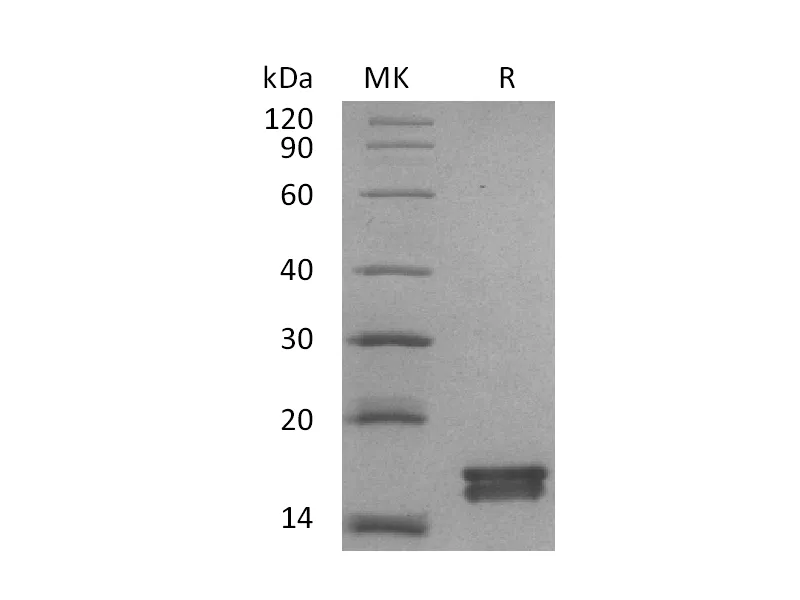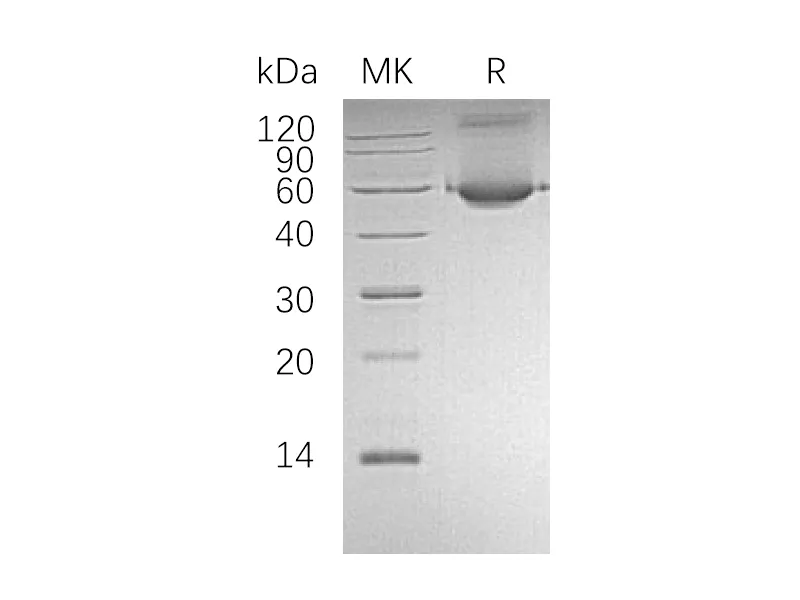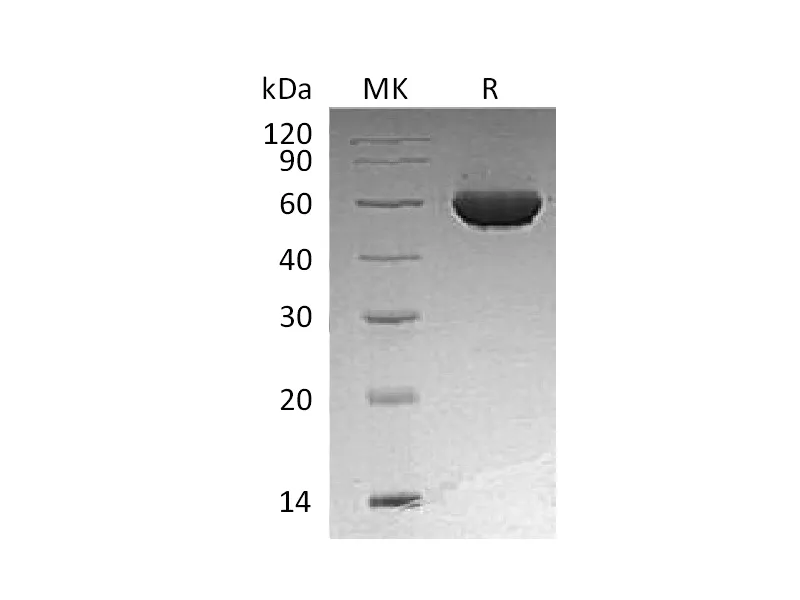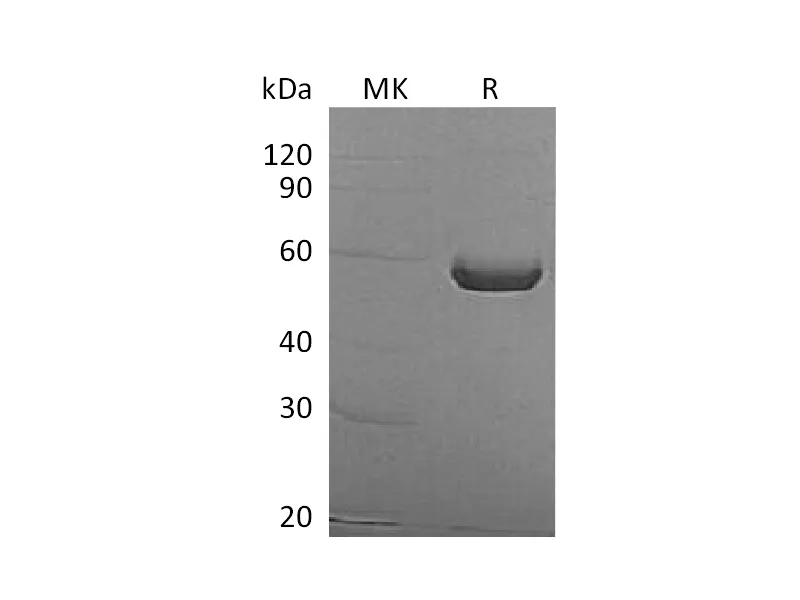Alternative Names
Ephrin-B2; EPH-Related Receptor Tyrosine Kinase Ligand 5; LERK-5; HTK Ligand; HTK-L; EFNB2; EPLG5; HTKL; LERK5
Background
Ephrin-B2 is a type I transmembrane protein and belongs the Ephrin family. It binds to the receptor tyrosine kinases, such as EPHA4, EPHB4 and EPHA3. Ephrin-B2 has been implicated in mediating developmental events, especially in the nervous system, erythropoiesis and tumour metastasis. Ligation of Ephrin-B2 with complementary EphB receptors on adjacent cells results in a combination of forward (EphB receptors) and reverse (Ephrin-B2) signalling, which is central to tissue development and remodelling functions. In addition, Ephrin-B2 may play a role in constraining the orientation of longitudinally projecting axons.
Note
For Research Use Only , Not for Diagnostic Use.




